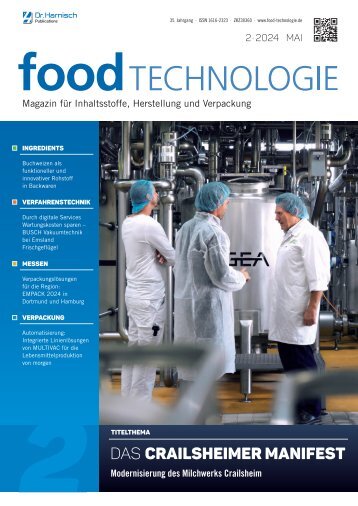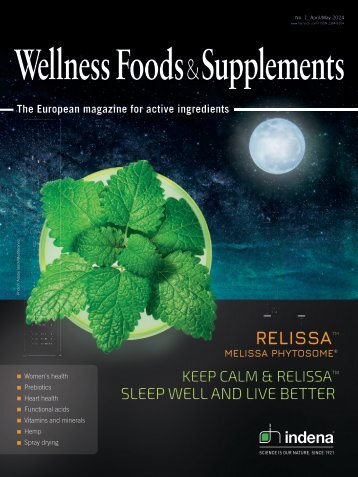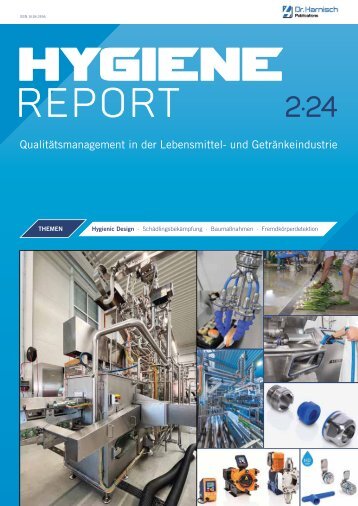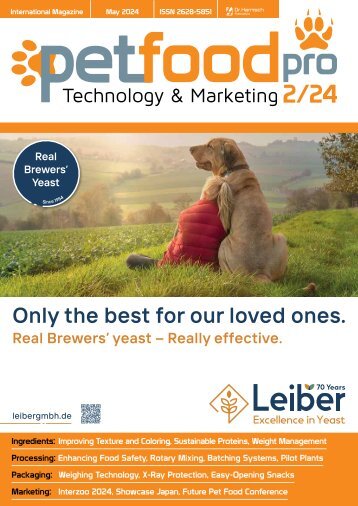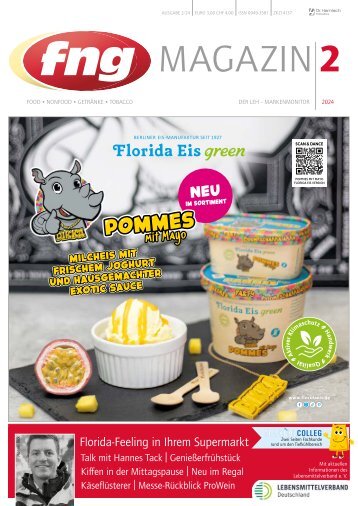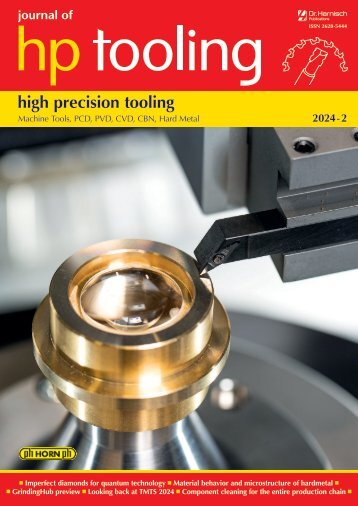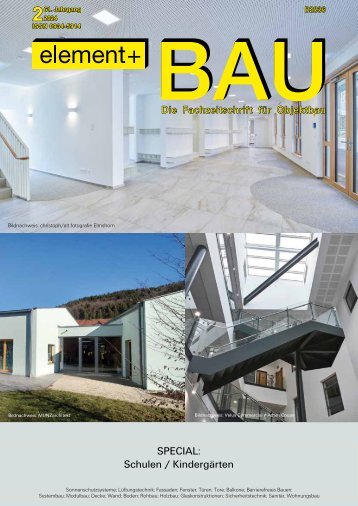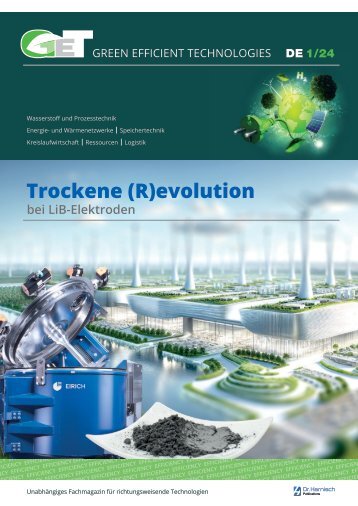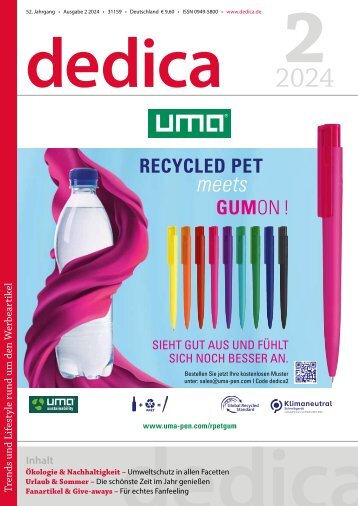food Marketing & Technology 5/2021
- Text
- Ingredients
- Marketing
- Products
- Processing
- Packaging
- October
- Germany
- Consumers
- Hygienic
- Pumps
- Harnischcom
Processing Optimized
Processing Optimized Operating Regime of Heat Exchangers Transferring heat is one of the basic processes in Food and Beverage production. This is true for both directions, heating and cooling of the product. Plate heat exchanger, Tubular, scraped heat exchanger, they all try to transfer heat as smooth and effective as possible. While the energy used can reach a relevant share of the cost, still the requirements for food safety need to be fulfilled. We want to display how food safety, quality and efficiency match by using the right sensors with a smart integration. Optimized Energy usage The yield of a heat transferring process depends on the available surface, the temperature difference between medium and product and the control loop between temperature sensor and heating valve. To ensure sufficient heating for all the product, a control system need to keep the temperature above the desired minimum temperature at any time. The systems improved over time, but still there is a delay between the recognition of the temperature sensor and the real temperature, as there is between the opening of the heating valve and the impact to become reality in the product. As one can see in Figure 1 it takes a while until the temperature sensors reading reaches the true value in the process. This time is called T90 time, as it describes how long it takes until a sensor shows 90% of the true temperature. The hygienic temperature sensor PT20H from Baumer only takes 2 second. In this time, not only the Pt100 sensor mounted in the reduced tip of the sensor, has recognized the actual temperature. Also the transmitter created the signal and sent it out to the control system. That means that compared to a slower sensor the system knows much earlier that the requested temperature is reached and can open or close the heating valve. As the signal transfer, the valve operation and the reaction of the system takes a while, this need to be considered. In the shown example, the lowest product temperature shall not be below 72°C to ensure the pasteurization effect. The system will have to ensure, that the temperature remains above this level. Knowing about the delay between the signal generation, transfer, controlling, and reaction, the programmer knows that the valve needs to be opened earlier. When the reading reaches maybe 73,5°C, the temperature will still go down, while the system knows, that it need to heat up again. After that reaction time, the temperature in the product is rising again, hopefully not underlining the 72°C. When a certain temperature is recognized, the controller will signal the valve to close down. The speed in the system will define the altitude of the curve that results. The faster and better the control loop works, the least safety margins need to be planned. As we see in Figure 2, the trend is condensed and the system will not reach 75°C, but only 74°C as highest temperature. This is due to the faster recognition of the real value by the sensors, allowing quick communication and earlier activity of the valve. A fast temperature sensor like the PT20H, Correlation of the reaction time of temperature measurement and heating valve on product temperature 30 food Marketing & Technology • October 2021
Processing together with a fast valve, will in this case help to safe the energy that is required to increase the product temperature above the possible ideal trend. Quality meets efficiency As positive effect, the product is not exposed to the higher temperature, which will help to safe the product quality, without spoiling the safety. Exposed to higher temperature than necessary, most natural products suffer in taste smell and view. Faster and smoother control may also help to avoid heat peaks that could cause burned product layer inside a heat exchanger. The savings in energy and thermal impact on the quality can be seen Figure 2. The areas marked in red are savings in both, energy and taste impact. Pump operation The other major information for the control loop is the flow velocity of the product. Relevant to ensure the desired heat contact time, the signal can as well be used to monitor the Optimized cleaning regime thanks to reliable sensor data system conditions. Changes in flow velocity, required energy amount and varying temperature profiles along the system indicate the status. The compact electromagnetic flow meter CombiFlow PF75H from Baumer supplies that information with high accuracy. Robust against the conditions around a heat exchanger, compact and fully sealed it is the right choice in this application. Optimized hygienic equipment But the sensors operation is not the only performance impact that should be considered. Hygienic integration, using Key No. 99496 food Marketing & Technology • October 2021 31
- Seite 1 und 2: 5/21 Vol. 35 • 31377 ISSN 0932-27
- Seite 3 und 4: Editorial Drinking your Daily Dairy
- Seite 5 und 6: Vol. 35 • 31377 ISSN 0932-2744 5/
- Seite 7 und 8: Cover Story fed into the pump,” e
- Seite 9 und 10: Ingredients Dietary fibers as Healt
- Seite 11 und 12: Ingredients The leading in-person a
- Seite 13 und 14: Ingredients rather short and brittl
- Seite 15 und 16: Ingredients a route to, among other
- Seite 17 und 18: Ingredients New Sports Nutrition In
- Seite 19 und 20: Ingredients Food Ingredients offers
- Seite 21 und 22: Ingredients IFT FIRST: Ingredient S
- Seite 23 und 24: Ingredients Efficient, reliable tes
- Seite 25 und 26: Processing SIMULATE WHOLE MUSCLE ME
- Seite 27 und 28: Processing Extended Power Range up
- Seite 29: Processing A collector conveyor has
- Seite 33 und 34: Processing Online Moisture Measurem
- Seite 35 und 36: Processing During the smoking proce
- Seite 37 und 38: Processing sufficiently fine a size
- Seite 39 und 40: Processing When the transmission is
- Seite 41 und 42: Processing process becomes more tho
- Seite 43 und 44: Processing All-Seeing Solution Brin
- Seite 45 und 46: Packaging The relentless search for
- Seite 47 und 48: Packaging separate the loose kernel
- Seite 49 und 50: Packaging with the packaging system
- Seite 51 und 52: Packaging each critical FM object d
- Seite 53 und 54: Marketing Cama Group Celebrates 40t
- Seite 55 und 56: Events Success for PPMA as the Show
- Seite 57 und 58: Q4 2021 26-28 October Lagos, Nigeri
- Seite 59 und 60: Vol. 35 • 31377 ISSN 0932-2744 5/
Unangemessen
Laden...
Magazin per E-Mail verschicken
Laden...
Einbetten
Laden...








































